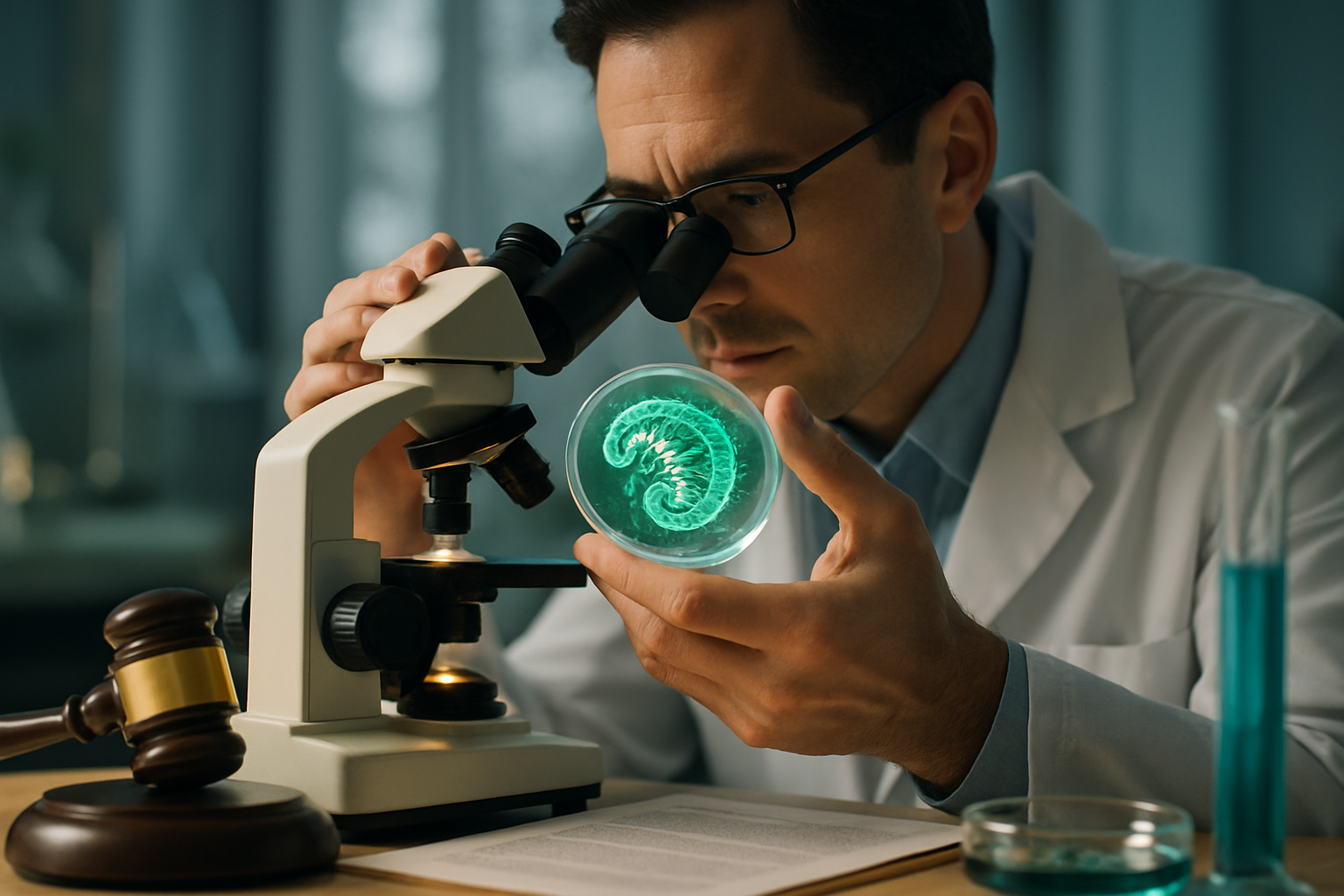Title: Legal Implications of Synthetic Biology: Navigating Uncharted Waters
Introduction: In the rapidly evolving field of synthetic biology, scientists are pushing the boundaries of genetic engineering, creating novel organisms and rewriting the very code of life. This groundbreaking discipline promises revolutionary advances in medicine, agriculture, and environmental remediation. However, it also raises complex legal and ethical questions that challenge our existing regulatory frameworks and force us to reconsider fundamental concepts of life, ownership, and responsibility.

The potential applications of synthetic biology are vast and varied. Scientists envision creating microorganisms that can produce biofuels more efficiently, developing new antibiotics to combat drug-resistant infections, engineering crops that can thrive in harsh environments, and even designing organisms capable of cleaning up environmental pollutants. However, as with any powerful technology, synthetic biology also carries potential risks and raises significant legal and ethical concerns.
Regulatory Challenges in a Rapidly Evolving Field
One of the primary legal challenges posed by synthetic biology is the inadequacy of existing regulatory frameworks to address its unique characteristics. Current regulations governing biotechnology and genetically modified organisms (GMOs) were largely developed in response to earlier forms of genetic engineering. These regulations often struggle to keep pace with the rapid advancements in synthetic biology, which can produce organisms with no natural counterparts.
In the United States, the Coordinated Framework for the Regulation of Biotechnology, established in 1986, divides oversight of biotechnology products among three federal agencies: the Environmental Protection Agency (EPA), the Food and Drug Administration (FDA), and the Department of Agriculture (USDA). However, this framework was not designed with synthetic biology in mind, leading to potential regulatory gaps and overlaps.
For instance, how should we classify and regulate a synthetic microorganism designed to produce a pharmaceutical compound? Does it fall under the purview of the EPA as a new chemical substance, the FDA as a drug, or the USDA if it’s produced in a plant-based system? These questions highlight the need for updated regulations that can effectively address the unique challenges posed by synthetic biology.
Intellectual Property and Patentability Issues
Synthetic biology also raises complex questions in the realm of intellectual property law. The ability to create novel biological entities and systems challenges traditional notions of what constitutes a patentable invention. In the landmark case of Diamond v. Chakrabarty (1980), the U.S. Supreme Court ruled that genetically modified organisms could be patented, stating that patent protection extends to “anything under the sun that is made by man.”
However, synthetic biology pushes the boundaries of this principle. As researchers create increasingly complex synthetic organisms, questions arise about where to draw the line between discovery and invention. Should a synthetic organism that closely mimics a natural one be patentable? What about a synthetic gene sequence that performs a novel function but is based on naturally occurring DNA?
Moreover, the open-source ethos that characterizes much of the synthetic biology community clashes with traditional patent-based approaches to innovation. Many researchers advocate for more collaborative models of intellectual property management, such as the BioBricks Foundation’s approach of making standardized biological parts freely available for use and modification.
Biosafety and Biosecurity Concerns
The potential risks associated with synthetic biology have led to calls for stringent biosafety and biosecurity measures. The ability to create or modify organisms raises concerns about the accidental or intentional release of synthetic organisms into the environment, as well as the potential for bioterrorism.
Legal frameworks must be developed to address these risks without stifling innovation. This includes establishing clear guidelines for the containment and handling of synthetic organisms, as well as protocols for assessing and managing potential environmental impacts. The Cartagena Protocol on Biosafety, an international agreement, provides some guidance on the transboundary movement of living modified organisms, but its application to synthetic biology remains unclear.
Additionally, the dual-use nature of synthetic biology—its potential for both beneficial and harmful applications—necessitates careful consideration of export control laws and research publication policies. Balancing open scientific inquiry with national security concerns presents a significant legal and policy challenge.
Ethical Considerations and Public Engagement
The legal landscape of synthetic biology is inextricably linked to ethical considerations and public perception. As the technology advances, lawmakers and policymakers must grapple with fundamental questions about the boundaries of human intervention in nature and the moral status of synthetic organisms.
Public engagement and education play crucial roles in shaping the legal and regulatory environment for synthetic biology. Transparent decision-making processes and inclusive dialogue can help build public trust and ensure that regulations reflect societal values and concerns. Legal frameworks should incorporate mechanisms for ongoing public consultation and ethical review as the field continues to evolve.
The Path Forward: Adaptive Regulation and International Cooperation
As synthetic biology continues to advance, it is clear that a more adaptive and flexible approach to regulation is needed. This might involve creating new regulatory bodies specifically tasked with overseeing synthetic biology, or developing more agile regulatory processes that can keep pace with scientific developments.
Furthermore, given the global nature of scientific research and the potential transboundary impacts of synthetic biology, international cooperation and harmonization of regulations are essential. Efforts to establish global governance frameworks for synthetic biology, such as those discussed at the Convention on Biological Diversity, will be crucial in addressing the legal challenges posed by this transformative technology.
In conclusion, synthetic biology stands at the intersection of scientific innovation and legal complexity. As we navigate these uncharted waters, it is imperative that our legal and regulatory frameworks evolve to ensure responsible development of this powerful technology while harnessing its potential to address global challenges in health, agriculture, and environmental sustainability.





